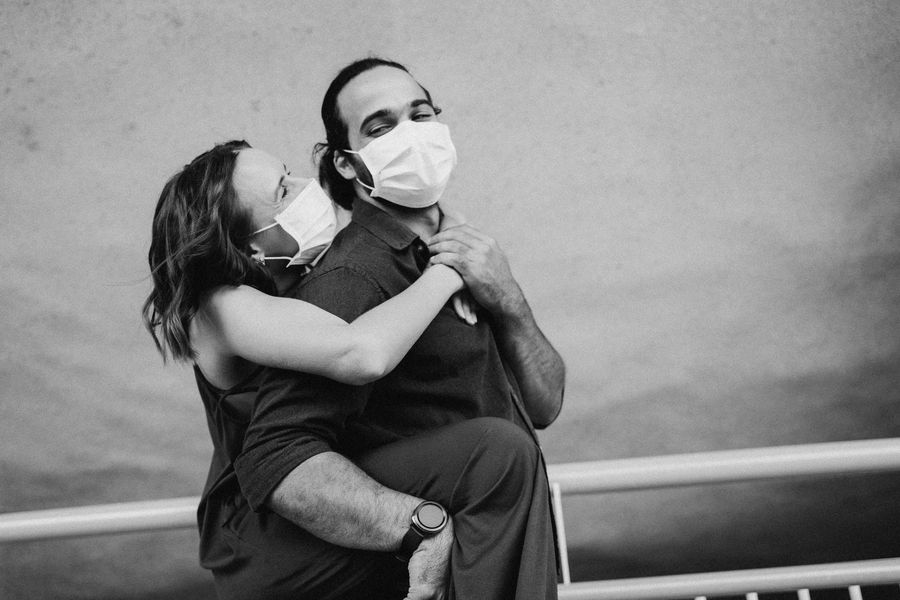Passive-Aggressive Behavior: What It Is and How to Spot It
Have you ever had a friend who constantly cancels plans but always has an excuse? Or a co-worker who makes comments under their breath that undermine your confidence?
These behaviors are both examples of passive-aggressive behavior, also known as PAPD. It can be frustrating dealing with passive-aggressive behavior, but with some understanding and awareness, you can handle it better.
What is passive-aggressive behavior?
Passive-aggressive behavior is characterized by indirect expressions of hostility and resentment.
The Mayo Clinic defines it as “a pattern of indirectly expressing negative feelings instead of openly addressing them.” Medical News Today adds that this behavior can manifest in subtle ways, such as “sarcasm, procrastination, or a failure to complete tasks.” In other words, passive-aggressive behavior involves expressing negativity in a roundabout way instead of being direct and honest. Why do people act passive-aggressive?
Why Do People Act Passive-Aggressive?
There are a variety of reasons why someone might act passive-aggressive. Often, it stems from a fear of conflict or a desire to avoid facing their own negative emotions.
Ray Sadoun, a clinical psychologist, explains that passive-aggressive behavior can also be a way for people to feel in control of a situation without having to take accountability for their actions. For instance, if someone always cancels plans, they might be avoiding having to say “no” directly or feeling guilty for not following through on their commitments.
How Can You Spot Passive-Aggressive Behavior?
Passive-aggressive behavior can be challenging to identify, but there are several signs to look out for.
Common Examples of Passive-Aggressive Behavior:
- Making others feel guilty for setting boundaries: If someone responds negatively when you set boundaries, like saying “fine, cancel our plans then,” they may be acting passive-aggressively by trying to make you feel guilty for speaking up.
- Not maintaining promises: If someone repeatedly fails to follow through on commitments and makes flimsy excuses, they may be acting passive-aggressively to avoid admitting they don’t want to do something.
- Criticizing others in a subtle way: If someone frequently makes comments that seem intended to undermine others’ confidence, such as “I’m surprised you were able to accomplish that,” they may be acting passive-aggressively.
- Giving the silent treatment: If someone shuts down and refuses to speak when they’re upset instead of addressing the issue directly, they may be acting passive-aggressively.
- Blaming others for problems: If someone consistently blames others for things that go wrong instead of taking responsibility, they may be acting passive-aggressively to avoid admitting their own mistakes.
- Acting upset without expressing why: If someone is uncommunicative about why they’re upset, but their actions indicate they’re unhappy, they may be acting passive-aggressively.
How Can You Handle Passive-Aggressive Behavior?
If you’re dealing with passive-aggressive behavior, it can be frustrating and challenging.
Tips for Coping with Passive-Aggressive Behavior:
- Address the behavior directly: If someone is acting passive-aggressively, it’s essential to speak up. Explain how their behavior makes you feel and ask them to communicate with you more directly in the future.
- Set clear boundaries: If someone makes you feel guilty for setting boundaries, it’s essential to hold your ground. Be firm in your communication and remind them that respecting boundaries is a vital part of any healthy relationship.
- Avoid getting defensive: When someone acts passive-aggressively, it’s tempting to become defensive and respond in kind. Try to avoid this and instead focus on communicating assertively and honestly.
- Give positive feedback: If someone is acting passive-aggressively to get attention, try giving them positive feedback when they’re acting positively. This can help reinforce those behaviors instead of rewarding negative ones.
- Seek support: Dealing with passive-aggressive behavior can be challenging, so it’s essential to seek support from friends, family, or a therapist if necessary.
In conclusion, passive-aggressive behavior can be frustrating to deal with, but with some awareness and communication, it can be managed.
Remember to address behavior directly, set clear boundaries, avoid getting defensive, give positive feedback, and seek support when needed. By doing so, you can improve your relationships and maintain your emotional well-being.
Dealing with Passive-Aggressive People: The Challenges of Responding Effectively
Passive-aggressive behavior can be incredibly challenging to deal with, leading to feelings of confusion, frustration, and even anger. The problem often lies in the fact that responding effectively requires more than just awareness of the behavior; it also involves understanding the underlying factors contributing to it and developing strategies for coping with those behaviors.
In this article, we explore the difficulties of dealing with passive-aggressive people and offer tips for responding effectively.
Lack of awareness of alternative responses
One of the key difficulties in dealing with passive-aggressive behavior is the lack of alternative responses. For many people, their go-to response to passive-aggressive behavior is to react in anger or frustration, which only exacerbates the problem.
To modify these automatic responses, it’s crucial to develop self-awareness of one’s emotions and learn alternative strategies for responding. This requires reflecting on one’s own emotional responses to such behavior and identifying patterns of reaction.
You may become aware of patterns in when you are more likely to answer with anger, when you are more likely to feel hurt or confused, or when you feel the need to withdraw from the situation. Once you identify these patterns, you can begin working on alternative responses to passive-aggressive behavior.
This may involve learning assertiveness skills, developing better communication strategies, or setting boundaries that work for you. Through self-awareness and deliberate practice, you can gradually replace your automatic reactions with more effective responses.
Need to attend to one’s own feelings first
Another challenge in dealing with passive-aggressive behavior is that it can be incredibly triggering to one’s own emotions. Someone exhibiting passive-aggressive behavior can stir feelings from being ignored, manipulated, belittled, criticized, or rejected.
The challenge is to recognize and attend to our own emotions first before trying to deal with the behavior. Coping strategies such as exercise, meditation, journaling, or deep breathing can be helpful in managing our responses to passive-aggressive behavior.
It’s essential to recognize that our emotional responses aren’t the problem, but rather the way we deal with them can either be helpful or unhelpful.
Passive-aggressive behavior rooted in fear
Another critical factor to consider in dealing with passive-aggressive behavior is that it is often rooted in fear. People who exhibit passive-aggressive behavior may be afraid of confrontation, rejection, or abandonment.
They may feel overwhelmed with negative emotions, uncertainty, stress, or lack of control over their lives. Their fear may lead them to avoid dealing with problems directly, or to use passive-aggressive behavior as a way to protect themselves.
The challenge in dealing with passive-aggressive behavior is to create an environment where the person feels safe and can begin to trust you. Focus on building relationships and trust before addressing the behavior to ensure that they feel heard, respected, and valued.
Be patient and compassionate, and remember that it takes time to create change and alternative ways of responding.
Conclusion
Dealing with passive-aggressive behavior can be a daunting task, but it doesn’t have to be. By developing self-awareness, attending to our emotions, and creating a safe environment for the person to open up, we can develop more effective strategies for responding.
Remember that the goal isn’t to change the other person, but rather to improve the quality of our relationships and our ability to manage our emotions more effectively.
With patience and effort, responding to passive-aggressive behavior can become less daunting, and we can feel more confident in our ability to navigate these challenging situations. In conclusion, dealing with passive-aggressive behavior can be challenging, but there are ways to respond to it effectively.
It’s crucial to develop self-awareness of our emotions, learn alternative responses to passive-aggressive behavior, and attend to our feelings before responding. Furthermore, it’s essential to recognize that passive-aggressive behavior can stem from fear and work on creating a trustful environment, building relationships, and being compassionate to foster positive change.
With these strategies in place, we can improve our relationships, manage our emotions better, and navigate these challenging situations confidently. It is an ongoing process that requires patience, effort, and practice, but in the end, it can lead to improved well-being, better communication, and healthier relationships.



